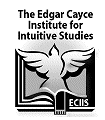| Edited by HENRY REED, Ph.D. |
March 04, 2007
|

|
Back to Understand and Develop Your ESP
Chapter OneOTHER THEORIES AND MODELSOne of the most important ways in which we learn is by constructing a theory or a model based upon all known information. These constructions should make certain predictions that are testable through research; based upon the findings of that research, modifications can then be made in the theory or model. This two-stage process has been described by James Connant (1947, p. 37). In the field of parapsychology more emphasis has been placed upon research than upon theorizing. Most parapsychologists would admit that we have yet to learn and understand fully how ESP works. Nevertheless, there is an extensive body of literature in which various models and theories have been proposed to explain the mechanism of psychic ability. Perhaps the most insightful description of these various theories is found in a book entitled Experimental Psychology, by K. Ramakrishna Rao (1966), who has proposed a useful way to categorize the many theories of psi phenomena that have been developed. The six categories recognized in his system are physical, field, collective unconscious, subliminal self, projection, and non-causal theories. Physical theories suggest that psychic ability can be understood in terms of physical energy transmission. This type of theory, however, faces two major criticisms. First of all, telepathy does not seem to decrease with distance, as we might expect if some particle or wave transmission were involved. And secondly, contrary to what a physical theory would tend to predict, using a Faraday cage to shield the receiver in a telepathy or clairvoyance experiment from electromagnetic waves does not seem to inhibit psychic ability. Despite these problems, some theorists continue to propose physical explanations of ESP. One recent example (Persinger, 1975) suggests that there may be some forms of electromagnetic waves which circumvent the two problems stated above. A further problem with physical theories concerns the meaning of the word "physical." The history of science demonstrates that the range of things that have been considered physical has steadily expanded. It might be better to use the word "physicalistic" to denote theories that make use of the current understanding of the domain of physical laws. It may well be that certain hypotheses not currently placed in the "physical" category would be so categorized 100 years from now, as our knowledge of the nature of the universe grows. A second class of theories makes use of the concept of fields. Explanations of this type frequently draw upon sophisticated principles of physics and suggest that every organism has associated with it behavior fields, psi-fields and so forth. Wassermann has proposed a theory (Ciba Foundation Symposium, 1956) which suggests that psi-fields are able to emit and receive very small amounts of energy-so small, in fact, that they are able to be transmitted over long distances without becoming absorbed by matter fields. Another example of afield theory (Murphy, 1945) takes an approach that is in many ways similar to concepts in the readings. It describes psi phenomena (particularly telepathy) as being produced not solely by the individuals who experience them, but rather by the field that exists as all the persons involved act as a whole-through the oneness between them. This theory would predict that states that tend to reduce a sense of personal, ego identity (relaxation states, for example) would enhance the likelihood of having a pyschic experience. A third group among the theories that have already been proposed involves the collective unconscious. Although Carl Jung preferred to approach psychic phenomena in a noncausal manner through his theory of synchronicity, others have seen in Jung's notion of the collective unconscious a possible mechanism for the transference of psychic impressions. One problem with such theories is that frequently they do not describe the mechanism through which psychic impressions are "selected" from the collective unconscious. Obviously there is an overwhelming amount of information available to each person through the collective unconscious. What distinguishes a good psychic from the average person seems to be the ability to select or choose the accurate psychic material. A fourth category uses the concept of a subliminal self. This involves an unconscious portion of one's personality capable of receiving extrasensory communication. This subliminal self, with paranormal abilities to receive information, operates beyond the limitations of time and space. According to most such theories, the subliminal self transmits its impressions to conscious awareness through symbolic forms, such as telepathic dreams, mental images and automatic writing. Closely related to the idea of a subliminal self is the category Rao calls projection theories. Such explanations are based upon the assumption that the receiver of extrasensory communication is the active party. According to theories of this type (for example, J.B. Rhine, 1935), at least a portion of the mind is capable of operating independently of the physical body and its time-space limitations. This portion of the mind is able to project itself, to "go out" and take the initiative in obtaining information psychically. The final category recognized by Rao consists of the non-causal theories. To say that two things are non-causal simply means that one is not causing the other to happen. This tends to be a difficult idea for our logical minds to work with. As mentioned earlier, perhaps the best known of the non-causal theories is Jung's notion of synchronicity. Jung rejected the concept of a causal relationship being operative in psychic experience because he felt that any causal occurrence must involve some form of energy exchange that would be bound by the laws of time and space. There seemed to be clear evidence that some ESP experiences did not operate within these bounds. Synchronicity, or meaningful coincidence, seems most attractive when describing spontaneous psychic events. However, instances involving especially gifted psychics who, like Edgar Cayce, are frequently able at will to complete psychic tasks, would seem to show the limitations of such a theory. Many proposed explanations of precognition would also belong in the non-causal category, since any accurate prediction about the future that is causal in nature would have to be inferential and not precognitive. However, some recent theories (such as Puthoff and Targ, 1974) make use of complex mathematical concepts to explain precognition in a cause-and-effect way. These six categories do not cover all of the theories that have been proposed. Some especially noteworthy ones have been suggested in the years since Rao's book was written. Rex Stanford (1974) has suggested that the nature of psychic ability may often be to fulfill the needs of the organism and that it often works without one's conscious awareness. Basically, his theory suggests that every person frequently uses psychic ability in an unconscious way to fulfill specific needs. He has also reported research findings that tend to support his theory. Charles Tart (1975) has described a systematic model of the mechanism of ESP, as have Osis and Bokert (1971). A model helps us to organize data and ideas into a convenient and comprehensive format. These models are especially significant in that they clearly identify some of the problems that face parapsychologists in constructing a comprehensive theory of ESP. Among other things, these models describe specific filters within the unconscious mind that can block or distort a psychic impression. We have probably all had some experience with the effects of these filters. From time to time we may have had an intuitive flash, or a hunch, that proved to be partially correct. It is as if the essence of the psychic message was able to get through, but along the way it was distorted or altered in some manner. Although they cannot be considered theories in the sense that they have led to testable hypotheses, certain teachings from Eastern religions describe psychic ability. For the most part these teachings see psychic powers as a byproduct of the more significant goal of spiritual enlightenment. Lama Govinda (1960) provides an example in his writings on Tibetan Buddhism, in which he states that the awakening of "magical spiritual powers (siddhi)" (p. 122) is related to the psychic centers of the body, or chakras. However, the body must be understood in terms of five interpenetrating bodies, each consisting of an increasingly more subtle or finer level of energy. This teaching would claim that to understand how ESP works we need to look beyond just the physical body, which is only the first of these five bodies. Such an idea closely parallels the theory found in the Edgar Cayce readings. This brief overview of the theories which have already been proposed is not complete. For the reader who wishes to pursue this subject in a more detailed fashion, Rao's book would be an excellent resource. Another helpful book would be Surveys in Parapsychology, by Rhea White (1976). Back to Understand and Develop Your ESP
|



